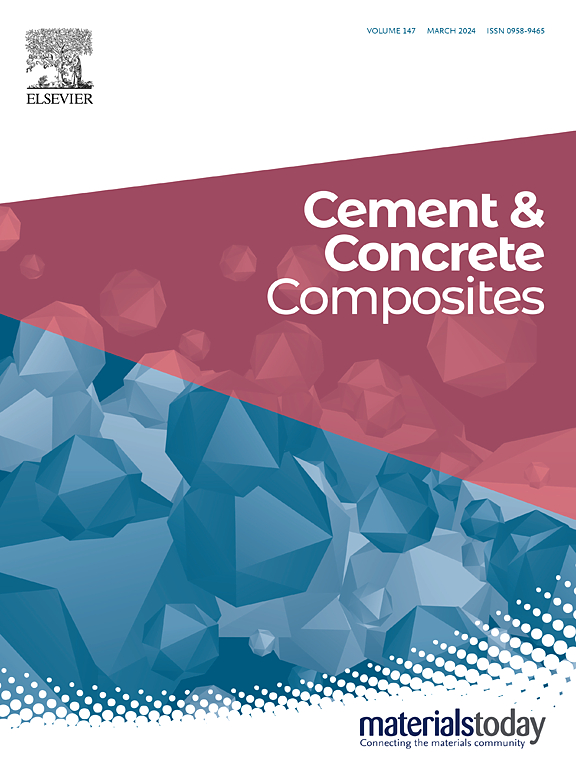用中铝酸钠碳化再生混凝土细粉合成低碳碱活性材料
IF 13.1
1区 工程技术
Q1 CONSTRUCTION & BUILDING TECHNOLOGY
引用次数: 0
摘要
本文报道了一种新型低碳碱活化材料体系的合成,以充分利用碳化再生混凝土细粒的反应潜力。系统地研究了碱活化再生混凝土细粒(AACRCF)体系的水化机理和强度来源。结果表明,AACRCF膏体具有与OPC相当的硬化性能,在W/S比为0.5和0.2时,其28天抗压强度分别达到25 MPa和90 MPa。AACRCF体系的水化反应具有高动力学和低放热的特点,主要包括碳-铝酸盐反应和碱活化反应,将CRCF中的碳酸钙和硅-氧化铝凝胶转化为单碳-铝酸盐和C-N-A-S-H凝胶。该体系的强度主要来自于其结晶相而不是凝胶相。总体而言,利用AACRCF系统可以显著减少碳排放,产生显著的环境效益。本文章由计算机程序翻译,如有差异,请以英文原文为准。
Synthesis of low-carbon alkali-activated materials using carbonated recycled concrete fines with sodium meta-aluminate
This paper reports the synthesis of a novel low-carbon alkali-activated material system to fully utilise the reaction potential of carbonated recycled concrete fines. The hydration mechanism and strength source of the alkali-activated carbonated recycled concrete fines (AACRCF) system are systematically investigated. The results indicate that the AACRCF paste can pose competent hardening properties comparable to OPC, with 28-day compressive strengths reaching up to 25 MPa and 90 MPa at W/S ratios of 0.5 and 0.2, respectively. The hydration of the AACRCF system typically exhibits characteristics of high kinetics and low reaction heat release, mainly including the carbo-aluminate reaction and alkali-activation reaction, which convert the calcium carbonate and silica-alumina gels in CRCF into monocarboaluminate and C-N-A-S-H gels. The strength of this system mainly comes from its crystalline phase rather than the gel phase. Overall, the utilisation of the AACRCF system can considerably reduce carbon emission, resulting in significant environmental benefits.
求助全文
通过发布文献求助,成功后即可免费获取论文全文。
去求助
来源期刊

Cement & concrete composites
工程技术-材料科学:复合
CiteScore
18.70
自引率
11.40%
发文量
459
审稿时长
65 days
期刊介绍:
Cement & concrete composites focuses on advancements in cement-concrete composite technology and the production, use, and performance of cement-based construction materials. It covers a wide range of materials, including fiber-reinforced composites, polymer composites, ferrocement, and those incorporating special aggregates or waste materials. Major themes include microstructure, material properties, testing, durability, mechanics, modeling, design, fabrication, and practical applications. The journal welcomes papers on structural behavior, field studies, repair and maintenance, serviceability, and sustainability. It aims to enhance understanding, provide a platform for unconventional materials, promote low-cost energy-saving materials, and bridge the gap between materials science, engineering, and construction. Special issues on emerging topics are also published to encourage collaboration between materials scientists, engineers, designers, and fabricators.
 求助内容:
求助内容: 应助结果提醒方式:
应助结果提醒方式:


